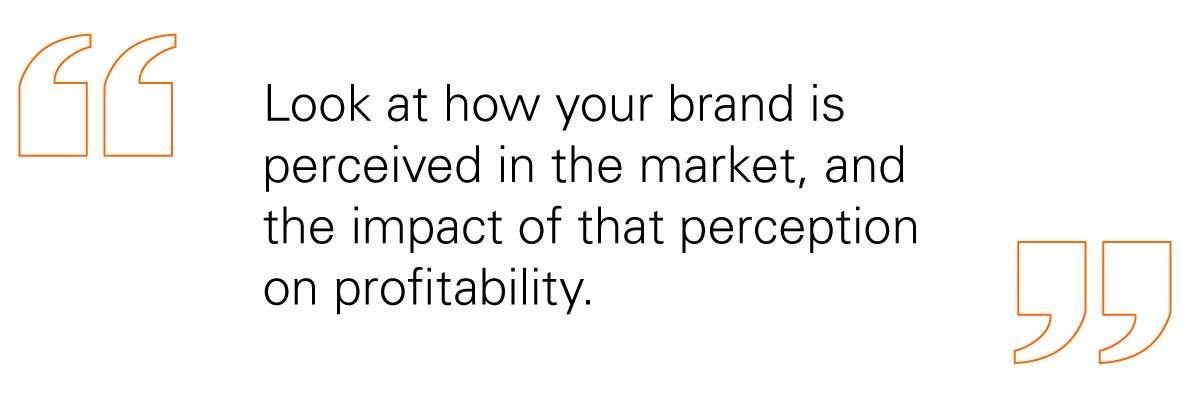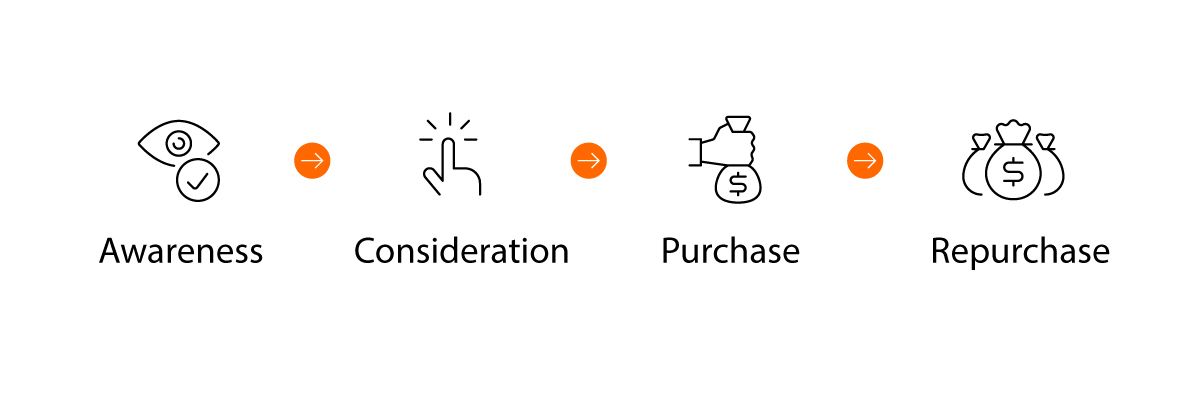

Connecting the Dots Between Your Brand and Account Holder
Thursday, April 13, 2023 | Becky Summers, Thought Leadership and Strategic Guidance
Interpreting critical data can pave the way to better performance
Thriving financial institutions have certain strengths in common. First and foremost, they develop deep relationships with accountholder households by actively cross-selling their products and services to ensure an increased share of wallet and fewer single-product households – resulting in stronger household profitability.
To accomplish this, they view performance through multiple lenses. They understand the work they need to do internally to build core competencies that help establish their brand, but also how their brand identity interacts with the needs of the marketplace. If your institution jumps at new opportunities too quickly, without evaluating these factors, you may miss some insights you could be relying on to create better performance.
At Raddon, a Fiserv company, we work closely with financial institutions to ensure they are using insights and data to refine their brand and take effective action for growth. So, let’s take a step back and look at how your brand is perceived in the market, and the impact of that perception on profitability. Two imperatives come into view.

Marketing must have a strategic focus; brand development is critical.
Raddon research reveals that 63% of consumers surveyed consider a major bank to be their primary financial institution (PFI). And over 80% of millennials and Gen Z respondents indicate that a big bank is their PFI. Your financial institution – whether a community bank or credit union – competes with those big national brands whether they are in your market or not.
Your institution needs to understand how your brand resonates within your market area. Raddon recommends a Raddon Brand Benchmark Study to help institutions more fully understand market perceptions.
The results of the study help identify a clear path to managing your brand by analyzing traditional, purchase-stage behaviors.
Awareness: Do local consumers recognize your existence and the availability of your products and services? National brands usually score higher in this area, but if your awareness score is low, there are things you can do. Strategies around advertising, availability and community involvement can help you differentiate your financial institution.
Consideration: Will consumers consider you and your products? A low consideration score would indicate a need to improve your sales efforts, complete competitive product and pricing comparisons, and develop and share your value proposition.
Purchase: Did they purchase from you? To improve this metric, you need to consider sales and onboarding efforts. That is where emotional connection can be developed for your brand.
Repurchase: If they purchased once, did they buy again? To be willing to do so, the accountholder needs to be pleased with the initial purchase. If this score is low, you have some work to do. You should consider improvements in your product design, ease of doing business, quality of service and better retention efforts. In short: Deliver on your brand promise.
Your financial institution won’t be able to implement needed changes until you understand your brand, and how consumers view your brand and value proposition in the market. A brand study will help, especially if your new household growth has declined or is not where you want it to be.
A Strong Brand Translates to Higher Consumer Loyalty

Understand your accountholder’s point of view.
Your financial institution can’t be all things to all people, but you can grow by focusing on your strengths and how they align with the needs of your accountholders. What opportunities do you have to enhance their financial well-being using your core competencies?
Accountholder surveys are a valuable way to see these opportunities and gauge whether you have a strong control of payments and balances. How are accountholders using your various channels? And more important, how satisfied are they with your products, services and delivery?
To get the most accurate picture, at Raddon we recommend that you consider transaction-level surveys as well as an annual accountholder-level survey. Look for key metrics that help define accountholder loyalty, satisfaction and usage. Of course, you aspire to be the PFI for your accountholders. But you need to understand plainly why they may not consider your institution primary in their financial lives.
You’ll be tempted to claim success when customers or members tell you they are “very satisfied” or “satisfied” (the top two box scores in an accountholder survey). But at Raddon we believe that, for competitive advantage, you need to be focused on the top box score. “Satisfied” is only table stakes; if you want your financial institution to be a high performer, focus on ensuring that you see “very satisfied” in your survey metrics. If you don’t receive the top score, you’ll want to find out why.
Raddon recommends soliciting accountholder perspectives to obtain information about the following:
- Accountholder satisfaction
- Delivery strengths and usage
- Ease of doing business with your institution
- Our level of penetration and control for your products and channels (whether the accountholder is using you, or someone else)
- Emerging problems and how well you are addressing them
Regular accountholder surveys will help your institution understand not only existing usage of products and services, but also directional trends that will indicate whether any changes you’ve implemented have made a difference or not.

Connecting the dots
Strong overall performance is dependent on using tools to understand how your brand resonates and what your accountholders think of your institution and what you have to offer. Viewing your performance through these two lenses – and collecting and interpreting the relevant data – makes it possible to “connect the dots” as you refine your market strategy for growth.

Want to ask us a question?
Interested in our services?
We’re here to help.
2900 Westside Parkway
Alpharetta, GA 30004
© 2025 Fiserv, Inc., or its affiliates.